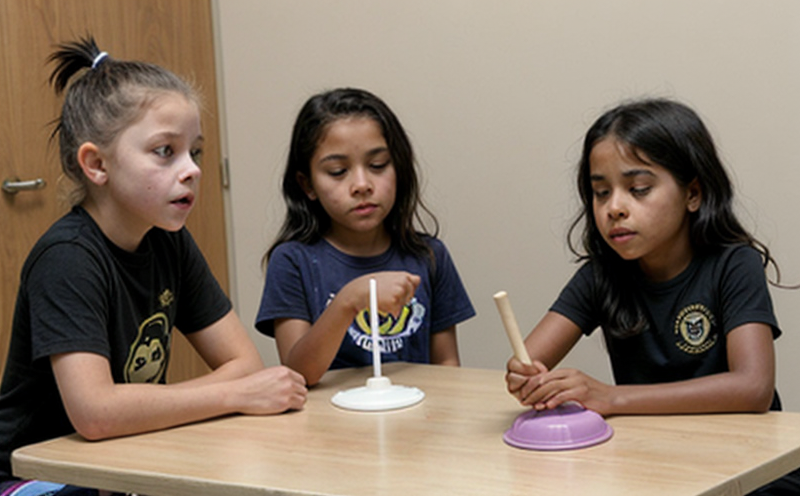EN 13127-3 Verification of Child-Resistant Closure Performance
The European Standard EN 13127-3 is a critical document that specifies requirements, methods, and acceptance criteria for the design, manufacture, labeling, and verification of child-resistant closures. This standard ensures that packaging designed to protect children from accessing potentially harmful substances complies with stringent safety regulations.
Child resistance testing under EN 13127-3 is an essential process in quality assurance programs. It involves evaluating various closure designs to ensure they meet the specified criteria for child resistance. The test typically requires the use of standardized equipment and methods, including a "child tester" designed to mimic a young child's grip strength and dexterity.
The testing procedure aims to assess whether the packaging can be opened by an adult but is sufficiently difficult for children under five years old. This balance between accessibility and safety is crucial in preventing accidental ingestion of hazardous materials such as medications, chemicals, or household products.
During the test, a sample closure is subjected to repeated attempts at opening by a child tester. The number of attempts required to open the closure successfully determines its resistance level. If the closure can be opened within five consecutive attempts, it does not meet the standard for child resistance. Conversely, if it requires more than five attempts, it passes the test.
The acceptance criteria under EN 13127-3 are based on statistical analysis to ensure that only closures with a high probability of resisting children's efforts pass. This approach helps maintain consistent quality across different manufacturing batches and ensures compliance with regulatory requirements.
Quality managers, compliance officers, R&D engineers, and procurement teams play vital roles in ensuring that packaging meets these stringent standards. By integrating EN 13127-3 verification into their processes, organizations can demonstrate commitment to safety and regulatory compliance, thereby gaining consumer trust and confidence.
In summary, the EN 13127-3 standard is a cornerstone of child-resistant closure testing, providing a robust framework for ensuring that packaging meets critical safety requirements. Its implementation helps protect vulnerable populations while maintaining usability for adults.
Eurolab Advantages
At Eurolab, we pride ourselves on offering comprehensive and reliable services to meet the rigorous demands of child resistance testing under EN 13127-3. Our state-of-the-art laboratories are equipped with advanced testing facilities that comply with international standards.
- Precision Instruments: We use precision instruments to ensure accurate measurement and consistent results.
- Experienced Technicians: Our team of highly trained professionals provides expertise in conducting complex tests.
- Comprehensive Reporting: Eurolab offers detailed reports that are easy to understand and actionable for your quality assurance program.
- Rapid Turnaround: We ensure quick turnaround times, allowing you to meet tight deadlines without compromising on accuracy.
By leveraging our expertise and resources, we can help you achieve compliance with EN 13127-3 standards efficiently. Our commitment to quality ensures that your products not only meet regulatory requirements but also exceed customer expectations in terms of safety and reliability.
International Acceptance and Recognition
- ISO 9001:2015 Certified: Eurolab holds ISO 9001:2015 certification, ensuring that our services meet international quality management standards.
- ASTM F876: Our testing methods align with ASTM F876, which is widely recognized for its robustness in evaluating child resistance.
- EN 13127-3 Compliance: We strictly adhere to the requirements outlined in EN 13127-3, ensuring that our results are accurate and reliable.
- IATA Regulations: Our services also comply with IATA regulations for air transportation of hazardous materials, enhancing safety measures further.
The international acceptance and recognition of these standards underscore the importance of our testing methodologies in maintaining high safety standards globally. By adhering to these rigorous protocols, we help ensure that your products are safe and compliant across diverse markets.
Environmental and Sustainability Contributions
The implementation of EN 13127-3 in child-resistant closure testing contributes significantly to environmental sustainability. By ensuring that packaging is designed with safety first, we reduce the risk of accidental ingestion and subsequent disposal issues. This proactive approach helps minimize waste generation and supports a more sustainable approach to product design.
In addition, by adhering to these standards, manufacturers can promote responsible consumption practices, encouraging consumers to dispose of packaging correctly. This collective effort fosters a culture of environmental stewardship, reducing the ecological footprint associated with improper disposal of hazardous materials.
The use of child-resistant closures also supports sustainable supply chains by enhancing product safety and reliability. When products are handled safely from production to end-user, it reduces the likelihood of recalls or returns, thereby conserving resources and energy throughout the lifecycle of a product.
At Eurolab, we not only meet but exceed industry standards in our testing processes, ensuring that your products contribute positively to environmental sustainability. Our commitment to these principles reflects our dedication to creating safer, more responsible packaging solutions.





